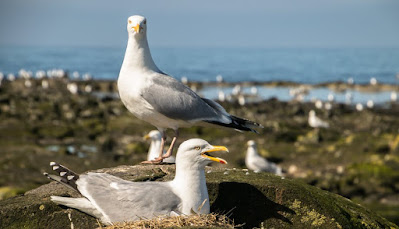Plastic discovered cellular lining UK seabird nests on a fretting range
From the product packaging our food comes into the clothing we use, plastic is all over. We understand that seabirds consume it and obtain entangled in it, however we are just simply starting to check out the effects this carries their health and wellness and survival. This is truly essential, especially in the UK where numerous types, such as the north gannet (Morus bassanus) and Manx shearwater (Puffinus puffinus), type in majorities compared to anywhere else on the planet.
Numerous seabird types remain in extreme decrease. A current record discovered that in the last 18 years, the UK populace of European shags (Phalacrocorax aristotelis) has dropped by 24%, black-legged kittiwakes (Rissa tridactyla) have decreased by fifty percent and Frozen skua (Stercorarius parasiticus) populaces have shrunk by 70%.
However what's behind these declines stays something of a secret. Overfishing and environment alter are believed to be essential chauffeurs, however in spite of understanding that plastic is extensive in their atmosphere, we presently absence also one of the most fundamental information on which seabird types are afflicted by this contamination and exactly just how.
Previously we could efficiently handle any type of risk positioned by plastic contamination, we have to comprehend the range and kind of impacts it is having actually. Our examine is a very first action to this. We discovered proof that Scottish seabirds are not just ingesting plastic, however they seem building up it in their nests. Agen Judi Bola Dengan Deposit Tercepat Dan Terbaik

We took a look at 5 European seabird types – fantastic cormorants (Phalacrocorax carbo), European shags, fantastic black-backed gulls (Larus marinus) and the much a lot extra acquainted seagulls, which are the herring (Larus argentatus) and lower black-backed gulls (Larus fuscus). The last 4 of these are of "Preservation Issue" in the UK inning accordance with the RSPB, because of their decreasing populaces.
Plastic contamination was intimately intertwined with the nesting behavior and lives of these types, potentially impacting their reproducing success and survival. We discovered that 32% of herring gull nests, 53% of fantastic black-backed gull nests and, worryingly, 80% of European fucked nests included plastic. Also even worse, 39% of herring gull pellets – regurgitated little bits of indigestible food – likewise included plastic.Plastic in nests is understood to ensnare grownups and chicks, frequently with deadly repercussions. For some types, the nest should maintain the egg cozy and completely dry. We have no idea whether plastic might be changing exactly just how well the nest warms its residents or enables fluids to drain pipes, however any type of modifications might impact hatching success. Similarly, the variety of colours plastic is available in might impact the nest's


